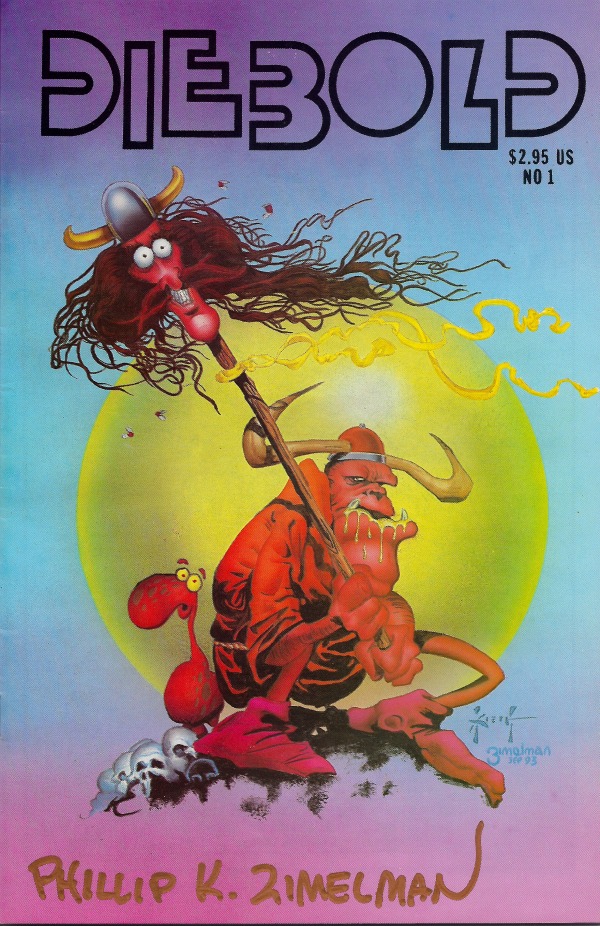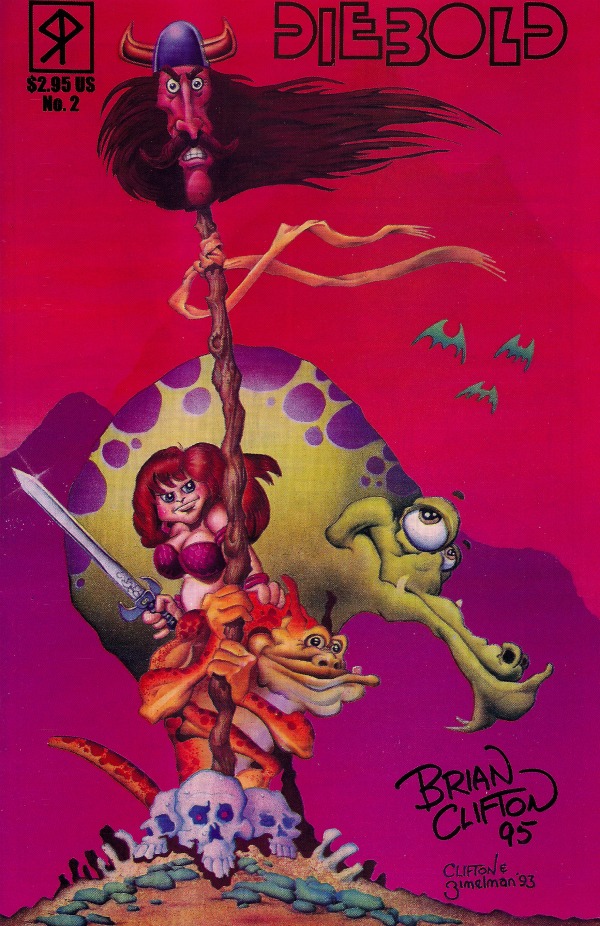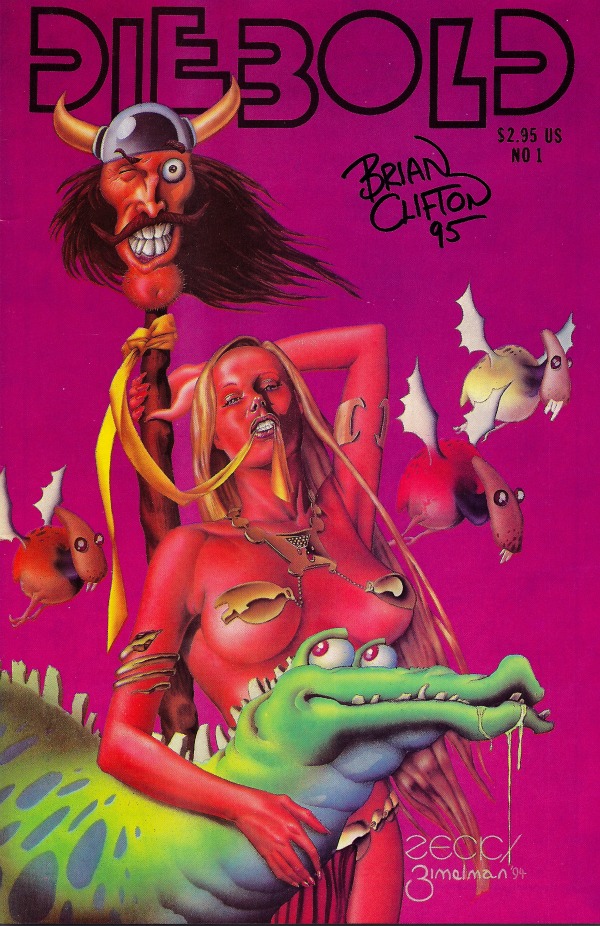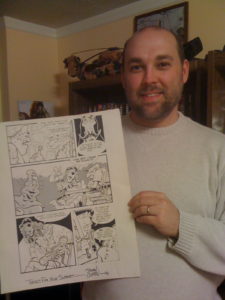Welcome to Comics Are My Religion, a look at theology through the lens of comic books. There are some basic ground rules about engaging in respectful dialog about religion in this column. Be warned, if you haven’t read the comics discussed below, you might want to go read it and come back, as this column may contain spoilers!

Jack Kirby. Mike Wieringo. Michael Turner. Will Eisner. As comic book fans, we all probably know where we were the moment we heard these and other inspirational creators passed away. There’s something about comic book creators that makes us readers think they are going to live forever. In many ways, they do live on in their work, at least for us. Especially those giants like Kirby and Eisner, the amount of work they did that new readers are still discovering for the first time makes them seem immortal.
But there are many creators who have died who have been just as inspirational, even though their work is obscure to the general masses of comic book collectors.

One such creator was a guy named Brian Clifton.
Brian was a gifted cartoonist and creator of only a few self-published titles. One was a book called Diebold. Diebold was a book in the same vein as Groo or Asterix. Its main character was a head-on-a-stick named Talking Ed who lived in a village called Diebold. In the first issue, he is joined by a boy named Rollins, his friend Campbell, and his pet lizard Juniper on a quest to find out the secret to how Ed lost his body. Brian’s books were funny, and cleverly illustrated with an odd cast of villagers in a distant and fantastic country. Diebold was scripted by John Holland, who co-created Diebold with Brian. They even got Sam Kieth and Mike Zeck to each do a cover of the first issue, both of which were colored by Philip Zimelman.

Brian and his partner John also came up with a neat idea to get the money to publish Diebold. They sold individual pages of the original art to benefactors and printed their names on the page each one owned. They published the book under the label Silent Partners to commemorate the folks who supported them.
Diebold came out in 1994, when comics were really becoming cool in the mainstream, especially independent comics because of the founding of Image Comics. Many self-publishers were trying to capitalize on Image’s success, and Brian worked hard to get his stuff out there. He was an electrician by profession and did his art in his spare time. He drew children’s coloring books as well as his comic work, and even wrote screenplays.

Last week, Brian died at age 59 after a long-fought battle with cancer.
And while most people in the comic world didn’t know him or his work, he is among one of the most inspirational creators of all time to me.
See, Brian was a distant relative of mine. He was married to my mother’s cousin, though I’m not sure what that made us. In fact, I never actually met Brian face-to-face. I was in high school in 1994 and very much into comics. At the time, I was actively creating my own characters (which were rip-offs of many Marvel characters) and was planning to graduate, go to the Savannah College of Art & Design, and begin my career in comics. As many of you know, God had some different plans for me, but Brian and his work hooked me into the creative side of comics at that formative time in my life.

I don’t know if my parents bought me a page of Diebold, or if Brian just gave it to me because he had heard I was a comic book fan, but I was one of the lucky people who got to own an original page of the book. I still remember the big package coming in the mail, which included Page 14 of the book, and signed copies of Diebold #1 and #2, along with another book called The Barbarian that Brian had done. One of the copies of Diebold was even signed by Philip Zimelman! At the time when there was no internet, seeing original art and having signatures of creators on their books was a fanboy’s dream! I guess those things are still fanboy dreams, but were much harder to come by in 1994. And while I don’t have anything published of my own, I can say that my name is printed in a published comic book!

Page 14 still hangs on my Comic Cave wall today. I remember studying the line work up close. Brian taught me about foreground and background by inking the foreground characters darker than the ones in the background. He also taught me about texture, motion lines, and shadowing. To this day, I credit being able to draw wooden objects because of the table, chairs, and the stick that Ed’s head rested upon in those panels. I learned this all from that one page.
There are so many comic book writers and artists out there and to the average comic book fan, they are nothing more than names in a credit-box on the first page of a book. But all of them inspire. They come and they go in the business. They have long careers and they have barely-existent careers. They live and they die. But all of them, with their gifts of imagination and vision, plant seeds within those who are lucky enough to grab a copy of their work. Those seeds are watered, and grow into new ideas and new creations that wouldn’t have been there without the work of the creator before.
Thank you, Brian, for Page 14 of Diebold. Thank you for your work, your dreams, and your imagination. Thank you for inspiring me. Thank you for reminding me the value of one person’s life on another. May God usher you and the millions of other creators, both well-known and obscure, into that place where inspiration lives forever and where creativity and beauty never die.
Jeff Jackson
jeff@comicattack.net


A creator in your family and a personalized piece of original art, very cool Jeff.
I must say that a talking head on a stick is one of the more interesting characters I’ve come across.
Yeah, he’s pretty funny. Kinda crass, kind of a jerk. He’s a neat character.
Nice piece Jeff.